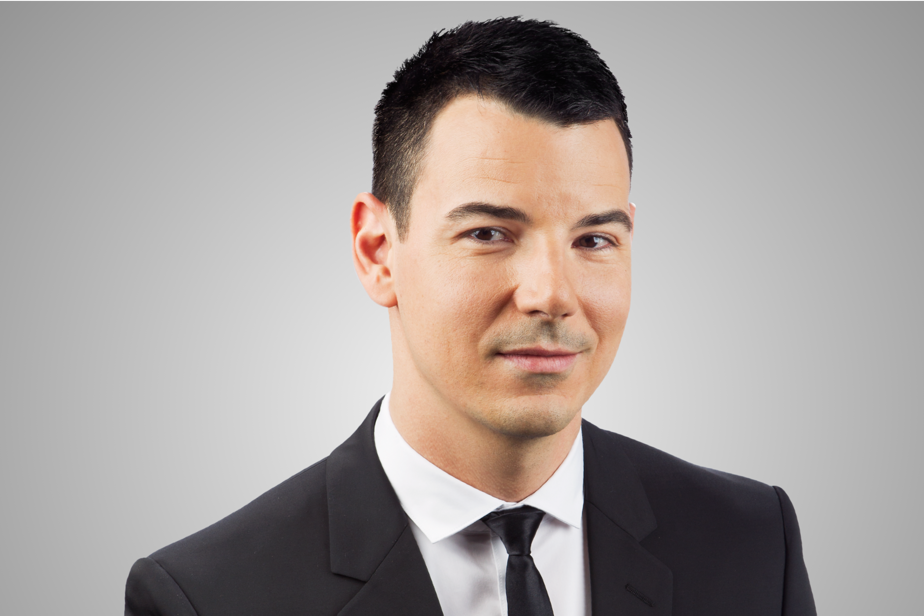Did you dive into a refreshing lake last weekend, miles from the sweltering humidity of Montreal?
You lived a while Our summersexcluding servants, oil lamps and formal address between spouses.
Almost 20 years after its release on TVA, the ambitious historical saga our summers, a classic of our television heritage, is reborn on the Amazon Prime Video platform, which offers the four seasons in French.
This abundant miniseries, which recounts the summer vacations of bourgeois Montrealers in Bas-du-Fleuve over a full century, fits perfectly with this warm period when we all dream of a cozy chalet, a wharf at sunset , a liter of sparkling rosé and a clear body of water.
I loved Our summers at the time and I rediscover, thanks to Amazon Prime Video, the panache, the romanticism and the recklessness of its 29 episodes. It was daring, in 2005, to start such a dense and complicated project, which followed six strong women who had lived in the same summer mansion – Les Salines – between 1900 and today.
The story unfolded with leaps into the future, flashbacks and even premonitions, these dreamlike sequences where a female character met her ancestors or her descendants dressed in red. It was, in fact, a thread of mutual aid between these six women linked by blood and the Salines residence.
The narrator also changed from episode to episode. ” Our summers, it’s my professional crush. It was very ambitious as a narrative structure. It was a big boat. It was a great writing experience and a very fun challenge,” recalls Michel d’Astous, who co-wrote and co-produced Our summers with his accomplice Anne Boyer, to whom we also owe My mother, My son, The blue Hour and a bunch of other popular shows.
Our summers begins in the summer of 1900, in Cap-sur-Mer, a fictional village inspired by Saint-Fabien-sur-Mer, near Bic National Park. Shopkeeper John Marivale-Desrochers (Jean-François Pichette) buys a piece of land from the Belzile family, the local farmers, and has a sumptuous summer house built there, the dream of his wife Maria Brabant (Sophie Prégent). This residence, baptized Les Salines, will pass from mother to daughter until modern times, i.e. 2007.
In Cap-sur-Mer, the very poor Belziles work for the Desrochers, the rich Montrealers who arrive with their huge trunks, their wooden croquet set, their beach deckchairs and their cook Bernadette (Pierrette Robitaille). Over the course of four seasons, the tragic destinies of the Belzile and the Desrochers intersect in death, adultery and rape, among other things. The Desrochers’ maid, Rachel (Karyne Lemieux), known as the cursed savage or the squaw, will play a key role in the sequel to this soap opera which covers seven specific summers, those of 1900, 1915, 1922, 1930, 1939, 1952 and 1966 .
And each summer had its own director: Lyne Charlebois, Francis Leclerc, Alain Desrochers, Philippe Gagnon, Nicolas Monette, Jean-François Asselin and Sophie Lorain, who shot the scenes near the St. Lawrence River in Kamouraska, where a shell empty manor of Salines was erected.
When Michel d’Astous and Anne Boyer presented Our summers at TVA, they had not traced the imposing family tree of their series, whose branches covered six generations. It’s simple, just about the entire directory of the Union des artistes (UDA) has played in Our summersincluding Marie-Chantal Perron, Patrick Labbé, Julie Le Breton, David Boutin, Marc-André Grondin, Sarah-Jeanne Labrosse, Sébastien Ricard, Sylvie Drapeau, Julianne Côté, Gilles Renaud, Louise Portal, Mylène St-Sauveur, Sébastien Huberdeau and Isabelle Blais.
Fanny Mallette marked the viewers by interpreting the difficult Nora, only daughter of John and Maria, a lame woman, married to an alcoholic doctor, who dreamed of writing in her pavilion on the family estate. Moreover, each of the six heroines of Our summers possessed artistic talent, be it piano, painting or singing.
Relayed by TVA between 2005 and 2008, Our summers has always exceeded one million in ratings. The first season, the best, in my opinion, was seen by 1,464,000 viewers. Each of the chapters contains eight episodes except for the second, which has been reduced to five hours. “TVA no longer had the means to do a full season and we didn’t want to run the risk of skipping a year,” recalls screenwriter and producer Michel d’Astous.
And for such a beefy historical miniseries, the allocated budget was not astronomical, we are talking about between $800,000 and $900,000 per hour. ten years ago Our summersseries Marguerite Flying had been manufactured at 1 million per hour at Radio-Canada.
Shock of social classes based on major historical events (stock market crash, two world wars, sexual revolution), there was already a side Downton Abbey In Our summers. Not to mention the torrid relations between the small staff and the great world, the piano recitals and the beautiful expensive dishes!
